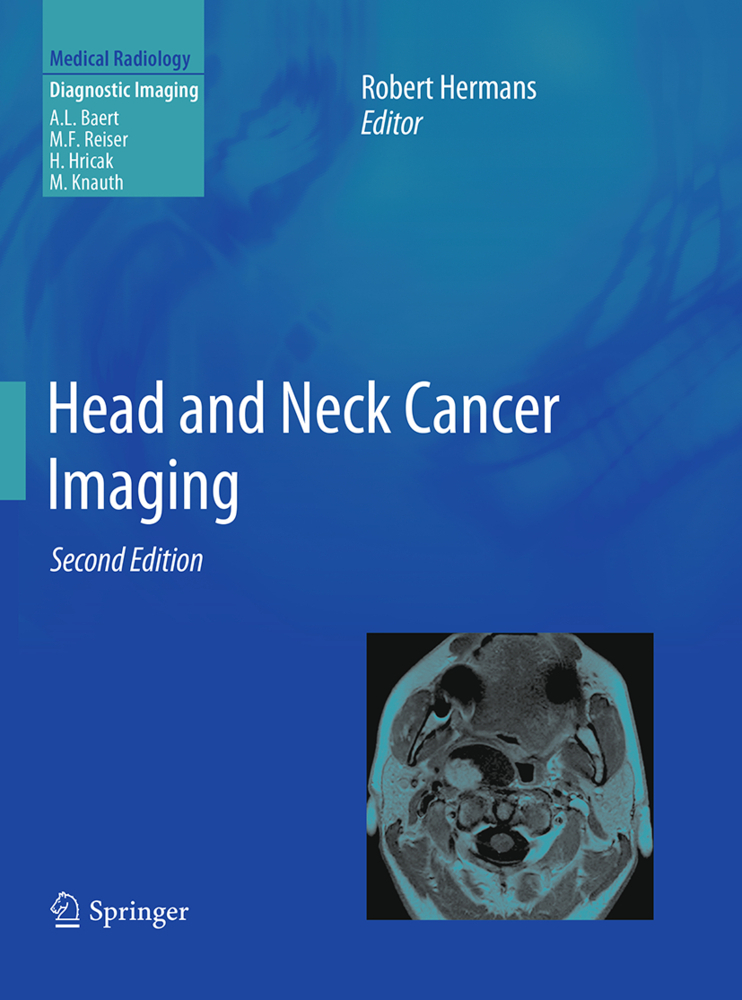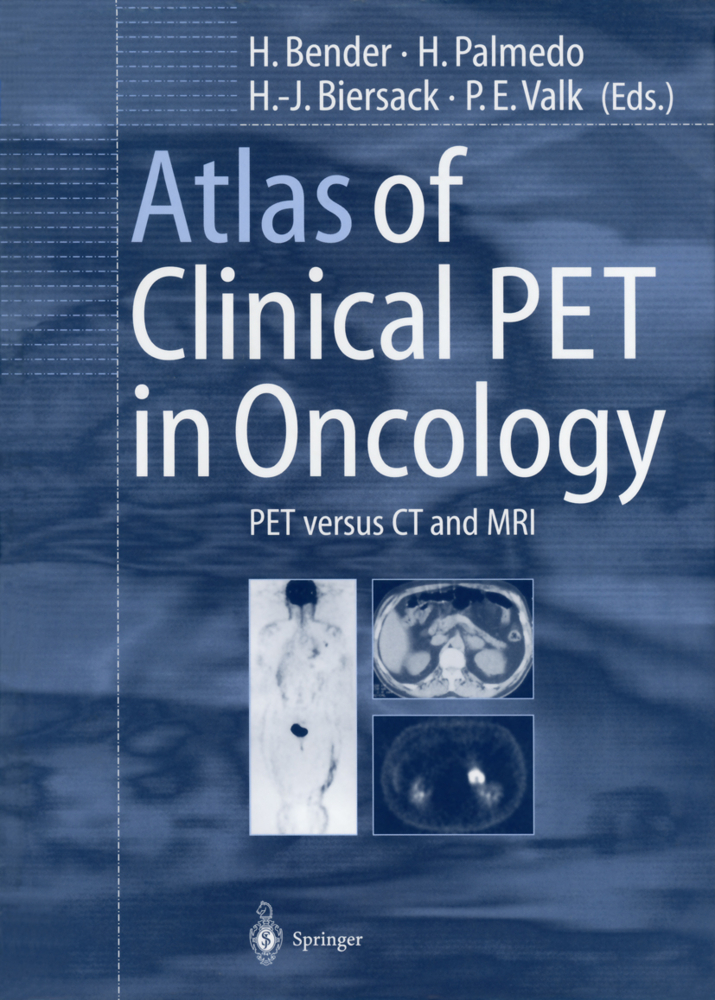Head and Neck Cancer Imaging
This book provides a comprehensive review of state-of-the-art imaging in head and neck cancer. Precise determination of tumor extent is of the utmost importance in these neoplasms, as it has important consequences for staging of disease, prediction of outcome and choice of treatment. Only the radiologist can fully appreciate submucosal, perineural, and perivascular tumor spread and detect metastatic disease at an early stage. Imaging is also of considerable benefit for patient surveillance after treatment. All imaging modalities currently used in the management of head and neck neoplasms are considered in depth, and in addition newer techniques such as PET-CT and diffusion-weighted MRI are discussed. This book will help the reader to recommend, execute and report head and neck imaging studies at a high level of sophistication and thereby to become a respected member of the team managing head and neck cancer.
1;Foreword;6 2;Preface;7 3;Contents;8 4;1 Introduction: Epidemiology, Risk Factors, Pathology, and Natural History of Head and Neck Neoplasms;10 4.1;1.1 Epidemiology and Risk Factors;10 4.1.1;1.1.1 Epidemiology: Incidence;10 4.1.2;1.1.2 Risk Factors for the Development of Head and Neck Malignancies;11 4.2;1.2 Pathology and Natural History of Frequent Benign and Malignant Head and Neck Neoplasms;13 4.2.1;1.2.1 Epithelial Neoplasms of the Mucous Membranes;13 4.2.2;1.2.2 Glandular Neoplasms;16 5;2 Clinical and Endoscopic Examination of the Head and Neck;25 5.1;2.1 Introduction;25 5.2;2.2 Neck;25 5.3;2.3 Nose and Paranasal Sinuses;28 5.4;2.4 Nasopharynx;29 5.5;2.5 Oral Cavity;30 5.6;2.6 Oropharynx;31 5.7;2.7 Larynx;32 5.8;2.8 Hypopharynx and Cervical Esophagus;34 5.9;2.9 Salivary Glands;35 5.10;2.10 Thyroid Gland;36 5.11;2.11 Role of Imaging Studies;36 6;3 Imaging Techniques;38 6.1;3.1 Introduction;38 6.2;3.2 Plain Radiography;38 6.3;3.3 Ultrasonography;38 6.4;3.4 Computed Tomography and Magnetic Resonance Imaging;39 6.4.1;3.4.1 Computed Tomography;39 6.4.2;3.4.2 Magnetic Resonance Imaging;45 6.5;3.5 Nuclear Imaging In: Maroldi R, Nicolai P (eds) Imaging in treatment;49 7;4 Laryngeal Neoplasms;50 7.1;4.1 Introduction;50 7.2;4.2 Normal Laryngeal Anatomy;50 7.2.1;4.2.1 Laryngeal Skeleton;50 7.2.2;4.2.2 Mucosal Layer and Deeper Laryngeal Spaces;52 7.2.3;4.2.3 Normal Radiological Anatomy;52 7.3;4.3 Squamous Cell Carcinoma;53 7.3.1;4.3.1 General Imaging Findings;55 7.3.2;4.3.2 Neoplastic Extension Patterns of Laryngeal Cancer;56 7.4;4.4 Prognostic Factors for Local Outcome of Laryngeal Cancer;64 7.4.1;4.4.1 Treatment Options;64 7.4.2;4.4.2 Impact of Imaging on Treatment Choice and Prognostic Accuracy;65 7.4.3;4.4.3 Use of Imaging Parameters as Prognostic Factors for Local Outcome Independently from the TN Classification;66 7.5;4.5 Post-treatment Imaging in Laryngeal Cancer;70 7.5.1;4.5.1 Expected Findings After Treatment;70 7.5.2;4.5.2 Persistent or Recurrent Cancer;75 7.5.3;4.5.3 Treatment Complications;78 7.6;4.6 Non-squamous Cell Laryngeal Neoplasms;80 7.6.1;4.6.1 Minor Salivary Gland Neoplasms;80 7.6.2;4.6.2 Mesenchymal Malignancies;81 7.6.3;4.6.3 Hematopoietic Malignancies ;82 8;5 Neoplasms of the Hypopharynx and Proximal Esophagus;88 8.1;5.1 Introduction;88 8.2;5.2 Anatomy;88 8.2.1;5.2.1 Descriptive Anatomy;88 8.2.2;5.2.2 Imaging Anatomy;89 8.3;5.3 Pathology;91 8.3.1;5.3.1 Non-squamous Cell Malignancies;91 8.3.2;5.3.2 Squamous Cell Malignancies;93 8.3.3;5.3.3 Secondary Involvement by Other Tumors;95 8.4;5.4 Cross-Sectional Imaging;97 8.5;5.5 Radiologist's Role;99 8.5.1;5.5.1 Pre-treatment;99 8.5.2;5.5.2 During Treatment;101 8.5.3;5.5.3 Post Treatment;101 8.5.4;5.5.4 Detection of Second Primary;106 9;6 Neoplasms of the Oral Cavity;110 9.1;6.1 Anatomy;110 9.1.1;6.1.1 The Floor of the Mouth;110 9.1.2;6.1.2 The Tongue;110 9.1.3;6.1.3 The Lips and Gingivobuccal Regions;111 9.1.4;6.1.4 The Hard Palate and the Region of the Retromolar Trigone;112 9.1.5;6.1.5 Lymphatic Drainage;114 9.2;6.2 Preferred Imaging Modalities;114 9.3;6.3 Pathology;114 9.3.1;6.3.1 Benign Lesions;114 9.3.2;6.3.2 Squamous Cell Cancer;121 9.3.3;6.3.3 Other Malignant Tumors;129 9.3.4;6.3.4 Recurrent Cancer;130 10;7 Neoplasms of the Oropharynx;135 10.1;7.1 Introduction;135 10.2;7.2 Normal Anatomy;135 10.3;7.3 Squamous Cell Carcinoma;138 10.3.1;7.3.1 Tonsillar Cancer;138 10.3.2;7.3.2 Tongue Base Cancer;139 10.3.3;7.3.3 Soft Palate Cancer;141 10.3.4;7.3.4 Posterior Oropharyngeal Wall Cancer;142 10.3.5;7.3.5 Lymphatic Spread;143 10.4;7.4 Treatment;143 10.5;7.5 Post-treatment Imaging;144 10.6;7.6 Other Neoplastic Disease;145 10.6.1;7.6.1 Non-Hodgkin Lymphoma;145 10.6.2;7.6.2 Salivary Gland Tumors;146 10.6.3;7.6.3 Other;146 11;8 Neoplasms of the Nasopharynx;149 11.1;8.1 Introduction;149 11.2;8.2 Normal Anatomy;150 11.3;8.3 Pathologic Anatomy;151 11.3.1;8.3.1 Anterior Spread;151 11.3.2;8.3.2 Lateral Spread;151 11.3.3;8.3.3 Posterior Spread;155 11.3.4;8.3.4 Inferior Spread;1
Hermans, Robert
| ISBN | 9783540330660 |
|---|---|
| Artikelnummer | 9783540330660 |
| Medientyp | E-Book - PDF |
| Auflage | 2. Aufl. |
| Copyrightjahr | 2006 |
| Verlag | Springer-Verlag |
| Umfang | 364 Seiten |
| Kopierschutz | Digitales Wasserzeichen |


